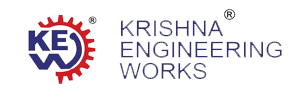1. What is a Slitter Rewinder Machine?
A Slitter Rewinder Machine is a converting system designed to slit wide jumbo rolls into narrower rolls and rewind them with controlled tension. It integrates unwinding, slitting, and rewinding into a continuous process used in flexible packaging, printing, paper, film, foil, and converting industries.
2. How does a Slitter Rewinder work?
A Slitter Rewinder operates through three functions:
- Unwinding: Feeds the jumbo roll with constant tension.
- Slitting: Uses razor, shear, or score knives to cut material into desired widths.
- Rewinding: Winds each slit strip onto new cores with controlled torque, creating uniform rolls without wrinkles, telescoping, or core crushing.
3. What materials can be processed on a Slitter Rewinder?
A Slitter Rewinder can process:
- BOPP, PET, CPP
- LDPE, HDPE films
- PVC film
- Paper & Kraft paper
- Aluminum foil
- Laminates & multilayer films
- Polyester film
- Non-woven & technical textiles
- Flexible packaging substrates
4. What are the main types of slitting systems used?
Slitter Rewinders use three cutting technologies:
- Razor Slitting: For thin films (BOPP, PET, CPP)
- Rotary Shear Slitting: For laminates, paper, foil, heavy materials
- Score/Crush Cut: For soft or elastic materials
Each system is selected based on substrate thickness, speed, and required cut quality.
5. What is the maximum speed of a Slitter Rewinder?
Speeds vary by model:
- Standard machines: 100–300 m/min
- High-speed servo models: 400–800 m/min
- Advanced duplex/duplex center-surface models: 1000+ m/min
Speed depends on film type, thickness, and material stability.
6. What is the difference between a center winder and surface winder?
- Center Winder:
Each rewind roll is driven through its core. Ideal for films, laminates, foil, and materials requiring precise tension. - Surface Winder:
Rolls are driven externally by surface contact. Suitable for paper, non-woven, and materials with higher thickness.
7. How is tension controlled in a Slitter Rewinder?
Modern machines use:
- Servo/AC vector drives
- Load cells
- Pneumatic or mechanical brakes
- Differential shaft winding
- Closed-loop tension control
- Automatic torque adjustment
This ensures consistent roll density and eliminates stretching or roll hardness variation.
8. What is EPC or Web Guiding in a Slitter Rewinder?
EPC (Edge Position Control) or Auto Web Guiding System maintains perfect web alignment during slitting.
It prevents:
- Misalignment
- Track variation
- Uneven slit width
- Poor edge finish
This is essential for high-speed slitting and narrow-width accuracy.
9. What core sizes are supported in Slitter Rewinders?
Standard core sizes include:
- 3-inch (76 mm)
- 6-inch (152 mm)
Custom core diameters can be provided depending on application requirements.
10. What are the common rewind roll diameters?
Typical rewind roll diameters:
- 300–600 mm (standard)
- 800–1200 mm (heavy-duty / jumbo slitter rewinders)
Rewind diameter depends on machine model and substrate.
11. What safety features are included in modern Slitter Rewinders?
- Emergency stop systems
- Safety interlocks
- Enclosed knife protection
- Overload protection
- Sensor-based safety monitoring
- Automatic braking
- Anti-static systems (for plastic films)
12. What maintenance does a Slitter Rewinder require?
- Regular knife sharpening/replacement
- Checking tension sensors & load cells
- Lubrication of mechanical parts
- Inspection of bearings, shafts, and brakes
- Cleaning web paths & rollers
- Software and servo calibration (as needed)
13. What affects the slitting accuracy and roll quality?
Key factors:
- Knife sharpness & alignment
- Tension consistency
- Machine speed
- Roller surface condition
- Material thickness & stability
- Web alignment system performance
High-end Slitter Rewinders provide precise tension control for perfect roll formation.
14. What is the difference between a Slitter and a Rewinder?
- Slitter: Only cuts the material into strips.
- Rewinder: Winds rolls but does not slit.
A Slitter Rewinder performs both operations together, making it more efficient for converting plants.
15. Does KEW International offer custom-built Slitter Rewinders?
Yes. KEW International designs and manufactures customized Slitter Rewinder Machines based on:
- Material type
- Roll width & thickness
- Required slitting width
- Rewind diameter
- Speed requirements
- Automation level
- Industry application
Each machine is engineered for optimum performance and durability.
📞 For Technical Inquiries & Quotations
KEW International provides high-performance Slitter Rewinder Machines for film, foil, paper, laminates, and specialty materials.
📞 Call / WhatsApp: +91 8460728298
📧 Email: info@kewindia.com
